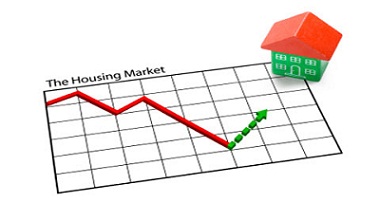I understand that most of you are visiting this website because, in one way or the other, you are contemplating a home purchase and that you want to use Pag-IBIG Home Loan to finance your investment. Indeed, we have come a long way in explaining the essentials of Pag-IBIG Housing Loan. From home buying preparation to the housing loan process and buying foreclosure units, we have already covered the most important stuff.
This article is a little bit different from the others we have made so far. It’s about not buying a house.
Yes that’s right. This is about NOT BUYING your piece of real estate. There are cases and situations when buying a house is a wrong move. As a matter of fact, there are people who should not even dare to look at a show house on display at a subdivision development or a condominium project. That’s harsh, I know. Bu if you belong to these groups of people, you would eventually thank me for giving that kind of suggestion. I’m doing this so you can keep your sanity intact and your money where it truly belongs: in your bank account.
You should not buy a house if…
1. You are a new kid in town
People do this all the time: they move from one place to another. They relocate to a new city as a result of their work assignment. They have a new business venture from out of town and they decide to move there to live. If you are in this situation, you should not buy a house immediately. Give yourself six months to one year to become familiar with your new place, its landscape, its people, and its political climate. If you are a family man and your wife and kids will be moving with you, you have to involve them in the decision process. Get input from your family members and your friends. You should use your common sense as well as your power for “feeling” a particular place.
Home buying is not like shopping for your grocery items. It takes a keen observation and careful attention to details. In choosing a place to live, you should consider such factors are the flow of traffic, location of schools, where people are shopping, the toxic and noisy areas of town and other similar factors.
(See also: How To Select A Good Location)
My suggestion is for you to rent a place for six months to one year, before you jump into the home buying decision.
2. You can’t personally see the house
Consider the following messages we receive from Overseas Filipino Workers:
- “Please help me buy a house in the Philippines. I’m still here in Canada, but I want to have my own house when I go back home for vacation.”
- “Can I apply for a housing loan even if I’m here abroad?”
- “Can you send me the Form to fill up when buying a condo?”
While it’s possible to buy a property even if you are based overseas, it may not be to your advantage. In fact, it invites a lot of surprises and frustrations later on when you have already made your commitment. Can you actually rely on the map sent to you by the real estate agent? How about the sleek brochures and presentations online on the developer’s website? Do you find them attractive? Can you tell which information and defects are not being shown to you?
Nothing beats actually seeing the property yourself.
(See also: 5 Great Tips for First Time Home Buyers)
3. Your marriage is down the sink
 If your Facebook Civil Status says, “Complicated,” you should consider a second opinion, or even third, when deciding to buy a house. Well here’s my short opinion: Don’t buy. Put the reservation money back in your wallet.
If your Facebook Civil Status says, “Complicated,” you should consider a second opinion, or even third, when deciding to buy a house. Well here’s my short opinion: Don’t buy. Put the reservation money back in your wallet.
There are couples who think that buying a home could somehow save their already dysfunctional relationship since it would require committed efforts from both parties. But isn’t sticking to a commitment the primary reason for the shaky relationship in the first place? While I am not a marriage counselor, I’ve seen enough marriage problems being finally brought up eventually when applying for a loan or transferring the land title to your name.
Like it or not, remember that we still don’t have divorce here in the Philippines. So, think twice before buying your dream house.
(See also: Take These If Your Housing Loan Application is Denied)
4. You are not financially fit to buy
Your home is one of the most expensive items you’ll ever buy in your lifetime. Can you buy in a single spot cash payment? For many of us, that’s unlikely to happen. That’s why we need a mortgage loan. And remember a loan will cost you money. It comes with an obligation you have to keep for a much longer time. Otherwise, the consequences would be dire and stressful.
(See also: How To Flex Your Financial Muscles)
Think about the 20% to 30% down payment. Where would you get that money? How much loan can you possibly afford to pay on a monthly basis?
(Related article: Income Requirement vs Loan Amount)
Are you aware of the other expenses that you need to prepare? We suggest that you prepare at least another 5% of the cash price for miscellaneous expenses and another 20% or so to buy your furniture and appliances.
Further Notes:
Perhaps for ethical reasons or due to the nature of their business, you probably won’t hear a real estate broker or agent give you any of the advice against buying a real estate. For them it’s always time to buy. But hopefully, after reading this article, you already know much better.
You have to know what you are doing. After all, you’re the one paying for the property.


 It works this way: They buy a piece of property, which is usually in a form of subdivision lot that is to be developed in some future time. Hold it for a couple of years or so, while waiting for the subdivision project to be completed and properly developed. Sell high at the current market price, which is usually higher than the cost of acquiring the property.
It works this way: They buy a piece of property, which is usually in a form of subdivision lot that is to be developed in some future time. Hold it for a couple of years or so, while waiting for the subdivision project to be completed and properly developed. Sell high at the current market price, which is usually higher than the cost of acquiring the property. It is a Home Financing Program offered by the real estate dealer (usually the developer) to their buyers who want to buy a house in a series of instalment payments without resorting to third-party financial institutions.
It is a Home Financing Program offered by the real estate dealer (usually the developer) to their buyers who want to buy a house in a series of instalment payments without resorting to third-party financial institutions.